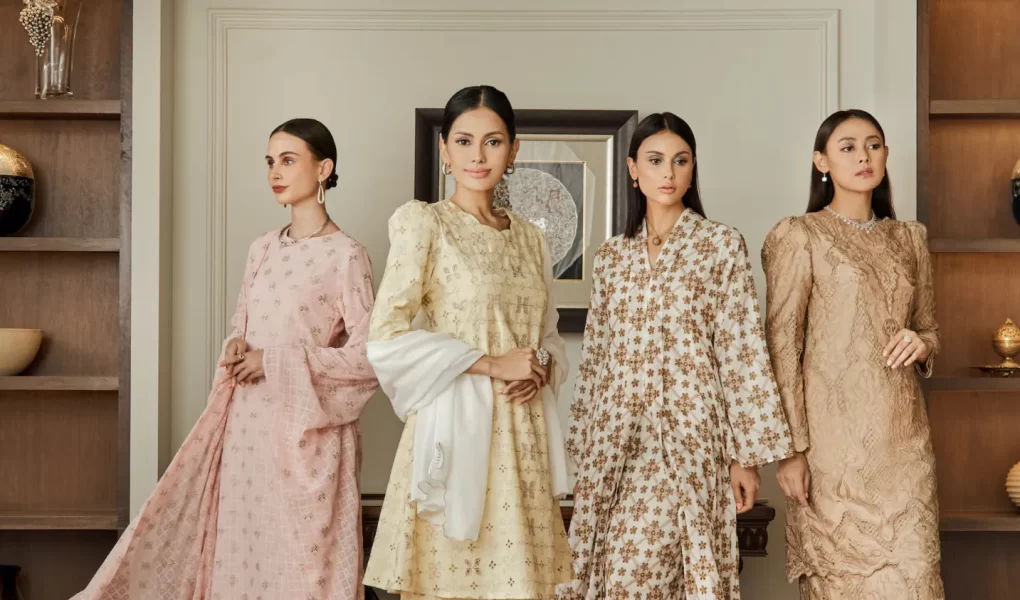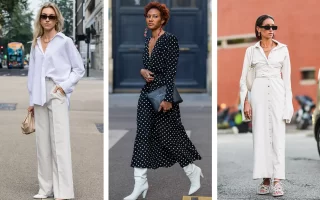The Baju Raya and Baju Kurung are iconic cultural symbols that represent not just the vibrant fashion sense of Malaysia and Indonesia, but also the rich traditions and history of these Southeast Asian nations. A blend of comfort and elegance, these garments have stood the test of time and continue to be an essential part of the region’s festivities and daily life. In this blog post, we will delve into the history of these exquisite outfits, the evolution of their styles, and the important role they play in shaping the cultural identity of the people who wear them.
Table of Contents
The History of Baju Raya and Baju Kurung
The Baju Raya, also known as Baju Melayu, is a traditional Malay attire worn by men during Hari Raya Aidilfitri, a significant Muslim festival that marks the end of Ramadan. It is believed that the Baju Raya originated during the Malacca Sultanate era in the 15th century. Over time, the attire has evolved to incorporate various cultural influences, including those from the Bugis and Arab traders who frequented the region.
The Baju Kurung, on the other hand, is a traditional dress worn by women in Malaysia, Indonesia, Brunei, and Singapore. Its name translates to “enclosed dress” in Malay, which aptly describes the modest and conservative nature of the attire. The Baju Kurung is believed to have been inspired by the Arab abaya and has been worn by Malay women since the 17th century.
The Evolution of Style
The Baju Raya and Baju Kurung have both undergone significant style changes over the centuries, embracing contemporary fashion trends while maintaining their cultural essence. Here are the key style evolutions that have shaped these garments:
1. Baju Raya: The traditional Baju Raya consists of a loose-fitting shirt (Baju) with a Mandarin collar and long sleeves, paired with matching trousers (Seluar) and a Sampin, a rectangular cloth worn around the waist. The modern Baju Raya now comes in various styles, including slim-fit designs, varying collar types, and unique embroidery patterns. The use of different fabrics like satin, silk, and cotton has also diversified the look and feel of this classic attire.
2. Baju Kurung: The classic Baju Kurung consists of a knee-length blouse (Baju) with long sleeves, worn over a long skirt (Kain) with pleats at the side or front. The contemporary Baju Kurung now comes in various designs, such as the Baju Kurung Moden, which features a more fitted blouse and skirt, and the Baju Kurung Pahang, characterized by its raised collar and full-length skirt. The use of diverse materials like lace, chiffon, and brocade has added depth and variety to the traditional Baju Kurung.
The Role of Baju Raya and Baju Kurung in Cultural Identity
The Baju Raya and Baju Kurung play an essential role in preserving and promoting the cultural identity of Malaysia and Indonesia. They are not just mere garments but also symbols of unity, tradition, and pride. Here’s how these outfits contribute to the region’s cultural identity:
1. Festive Celebrations: The Baju Raya and Baju Kurung are central to Hari Raya Aidilfitri celebrations. Families come together wearing their finest traditional attire, showcasing their cultural heritage and bonding over shared customs.
2. Formal Occasions: Both garments are worn during formal events, including weddings, official ceremonies, and cultural functions. They symbolize respect for tradition and an appreciation of the region’s rich history.
3. Daily Wear: With many people choosing to wear them to work or during casual outings. This increasing popularity has led to a resurgence of interest in traditional clothing, fostering a sense of cultural pride and reinforcing the importance of preserving regional customs.
4. Fashion Industry: Local designers have played a crucial role in redefining the Baju Raya and Baju Kurung for modern audiences. By incorporating contemporary elements into their designs, they have not only made these garments more appealing to younger generations but also helped to promote the region’s fashion industry on a global stage.
5. Cultural Exchange: The Baju Raya and Baju Kurung have become symbols of cultural exchange, with people from other countries and cultures embracing these garments as a way to connect with and appreciate the rich heritage of Malaysia and Indonesia. This cross-cultural appreciation has contributed to a broader understanding and respect for the region’s customs and traditions.
Baju Raya are More than Just Beautiful Garments
The Baju Raya and Baju Kurung are not just beautiful garments that showcase the exceptional craftsmanship and artistic talents of the people of Malaysia and Indonesia; they are also powerful symbols of cultural identity and unity. By understanding their history and significance, we can appreciate the role these outfits play in shaping the region’s cultural landscape and fostering a sense of pride and belonging among its people.
As the world’s best SEO copywriter, I hope that this blog post has provided you with a comprehensive understanding of the Baju Raya and Baju Kurung, their history, evolution, and importance in the cultural identity of Malaysia and Indonesia. So, the next time you don these stunning garments, take a moment to appreciate their rich heritage and the many hands that have contributed to their creation over the centuries.



